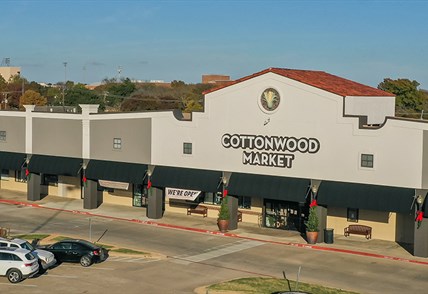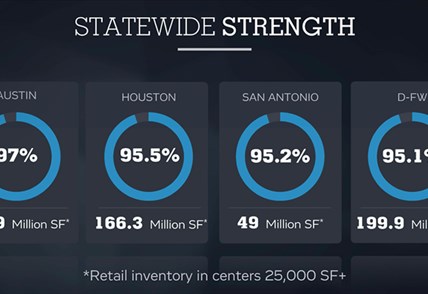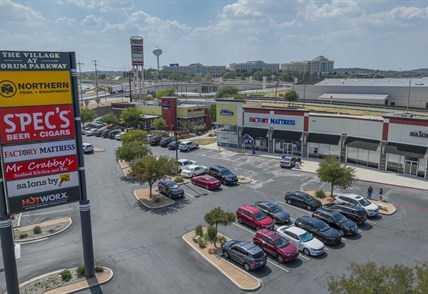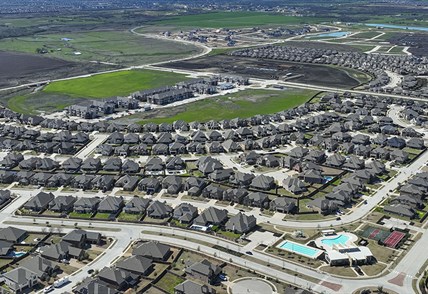by Bob Young, Executive Managing Director
We'll all look back on 2020 as a year of challenge and nearly overwhelming uncertainty.
But just four months into 2021, it's looking more and more like a year of promise, growth and recovery.
So let's look at where we've been, where we are and where we're going in terms of retail real estate.
TEXAS’ RETAIL MARKETS
The major-metros of Austin, D-FW, Houston and San Antonio all experienced higher vacancy during the past year. But despite anchor closings, largely from department stores, and a number of smaller tenant failures, all of the markets continue to report healthy occupancy ranging from around 92 to 95 percent.
These occupancy percentages, even after the pandemic, are higher than the markets experienced during the high-construction decae of the 1990s.
During the pandemic, occupancy was boosted in part by landlords working with tenants, PPP programs and retailer innovations helped maintain occupancy.
The grocery-anchored community center, neighborhood, power and mixed-use center categories all maintained healthy occupancy, while malls as a category struggled with higher vacancy.
We're optimistic about growth in occupancy this year, especially with population and residential growth that lead the country.
With the vaccine, we expect that by the third or fourth quarter of 2021, shoppers will again feel safe at retail destinations.
That means a good year in 2021 and a stronger one in 2022.
KEEPING TENANTS IN BUSINESS IS JOB ONE
At Weitzman, we manage more than 22 million SF of retail space in Texas.
That's more than 3,500 tenants.
Previous downturns have shown that it's better to keep a viable tenant in place if possible.
Despite the pandemic, we were able to keep more than 98 percent of those tenants in business.
The lessons learned through this process will help make retail better even after the pandemic.
During the pandemic, as tenants struggled with a huge drop-off in foot and drive-by traffic, we replaced the digital focus on geo-fencing with a scientific, hyper-targeted approach based on individual customer interests.
These tools allow us to locate high-interest customers to target for our centers and our tenants.
This approach also allows us all to have access to the analytics to run any report at any time and to constantly refine and improve our targeting strategies and messages.
To reach customers in dense areas with a lot of competition - think Frisco or West Plano - interest targeting gives us the ability to reach the frequent and loyal customers who may live, say, 10 miles away but still make a trip to a particular center or restaurant a weekly ritual.
Analysis of data can also direct us to the messages that will result in visits to a particular center, shop or restaurant.
With the proper analysis, we can understand a targeted area's customer needs in the future.
That understanding can prove invaluable to the ongoing success of our small tenants, both during and after the current pandemic.
While some tenants are seeing sales declines compared to a year ago, we do have some who have seen increases when comparing the current sales period to the same period a year ago.
We think that when people do go out, they go with the intention to buy.
RESTAURANTS
The pandemic hit restaurants - especially dine-in concepts - very hard.
The Texas Restaurant Association reports than 10,000 restaurants closed in the state during 2020.
Restaurants that have survived are now seeing increased volumes from takeout, curbside and delivery, but there are still challenges to making the dining rooms work for people to feel safe.
But more and more restaurants are doing well. The national numbers tell the story.
The restaurant category enjoyed sales of $62.2B in March 2021, according to the Census Bureau. That is 36% higher than the dismal March 2020 total.
March 2021 restaurant sales are nearly equal to pre-pandemic March 2019, when total U.S. restaurant sales came in at $62.6B.
The Pandemic Changes Restaurant Dynamics
We use a lot of research into consumer patterns.
Placer.ai allows us to see actual shopper traffic.
Their numbers on restaurants are interesting, to say the least.
Coffee chains like Starbucks and Dunkin’ saw a decline of around 1% in each morning hour from 6 to 9 AM, as many were cutting off their on-the-way-to-work coffee stops.
On the other hand, the percentage of mid-day visits grew significantly across all dining segments in comparison to the previous year.
As homes became the new office, mid-day lunch outings became a more significant piece of the puzzle.
The QSR, fast-casual, and sit-down segments all saw an average increase of around 1% in visits between 2 to 4 PM as well.
The coffee space saw the increase of mid-day visits span across more hours, from around 10 AM to 3 PM.
Even with RTO, we expect flexible work to become a more commonplace practice.
That could generate more business as concepts increase output throughout the day.
CONSUMER SENTIMENT
Let's take a minute to address some numbers relating to consumer behavior.
The International Council of Shopping Centers has surveyed consumer sentiment during the pandemic.
Surveys show that, during the pandemic, consumers took advantage of different shopping channels but fewer patronized physical stores.
In the most recent survey, released just last Friday, consumers reported:
41 % shopped a physical store for non-essential (clothing, electronics, etc.) goods
38 % dined inside a restaurant, bar or other eating place
33 % shopped at a mall
Longer-term, consumers told ICSC they would do the following within two months after a reduction in the spread of the virus:
71 % would visit a physical store to buy clothing, electronics, etc.
59 % would patronize restaurants or bars
53 % would visit personal service providers like spas and nail salons
One thing to note, shutdowns and social distancing have made people appreciate in-person shopping.
ICSC surveyed people and asked- When things return to normal, what do you plan to do MORE of than before the pandemic?
Shop brick & mortar - 28 %
Patronize eating & drinking places - 30 %
Go to a mall - 24 %
Go to a gym - 20 %
Based on reports like this, we can reasonably expect stronger center traffic this year and much stronger in 2022!




